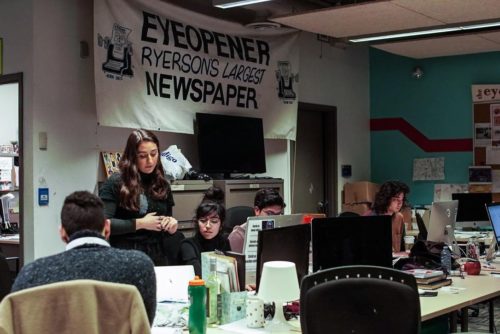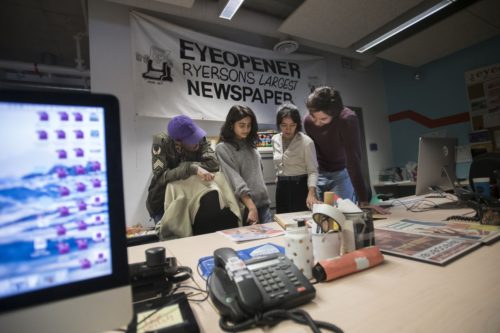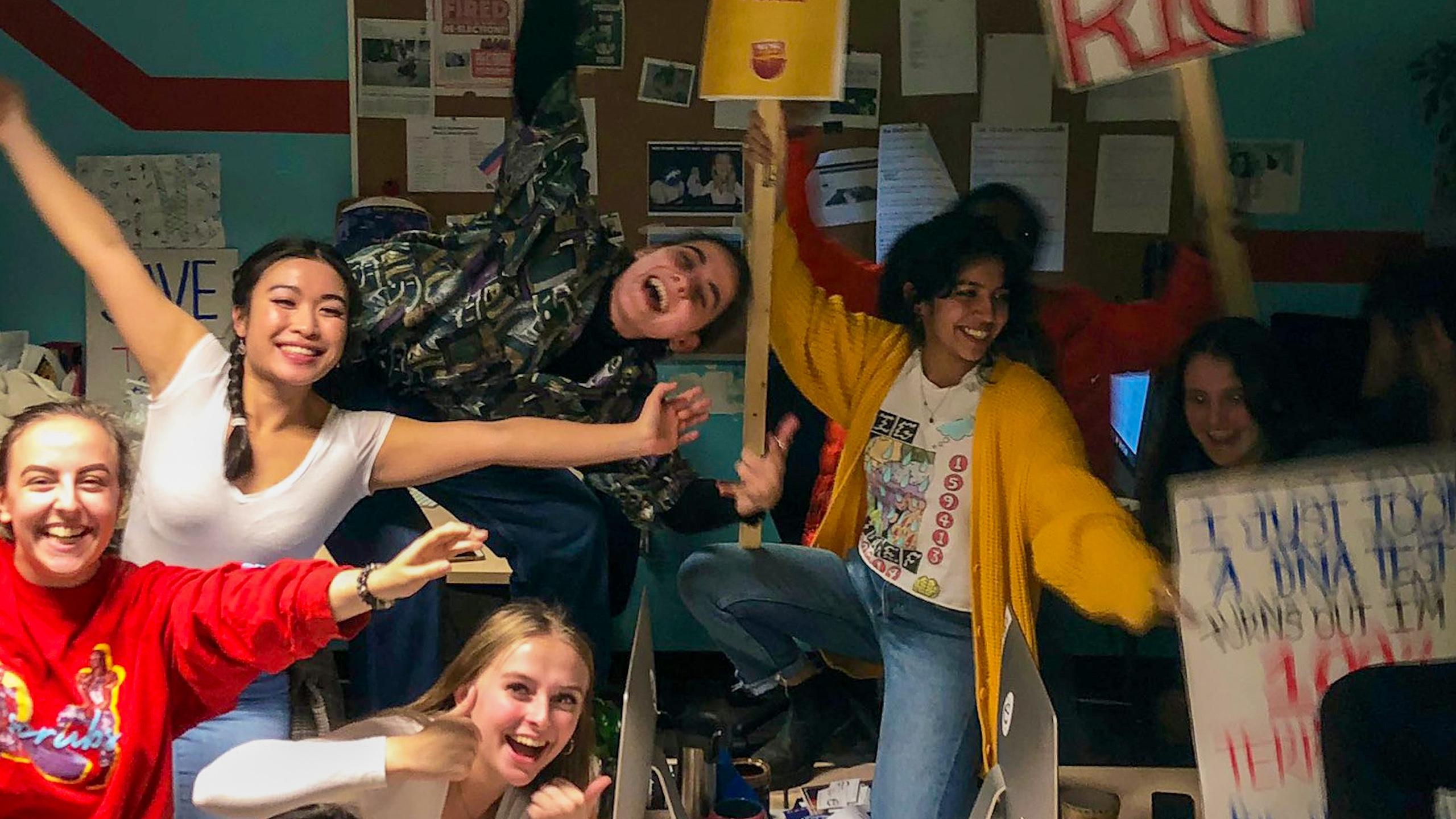By Sarah Krichel
Every Eyeopener editor and contributor knows one thing about getting started at this paper: the unfortunate layout of our office. Entering requires you to walk through a poorly-lit hallway to get to the main portion of our office. If you really want to work here, you have to prove it—face the anxiety of being a nervous young writer, walking through that hallway for the very first time, only to arrive at an open-concept workspace where no one knows who you are.
I first walked through that hallway in my first year of university, in the fall of 2015. And yes, it’s intimidating your first time around. I became a frequent news contributor and by fall 2016, I was a news editor. Throughout the years I went through the positions of photo editor, features editor and then in March 2019, I was elected editor-in-chief. That marks five years—nearly a quarter of my life—at The Eyeopener.
Our publishing staff, on the other hand (we have general, advertising and design managers), all of whom have been here for over 10 years, will tell you they’re forever nostalgic over our brand as the campus paper that just doesn’t give a fuck. They remember making a gerbil (Scoop W. Gerbil, that is) run for student union president in 2001. They remember the night in 2010 when Eye editors stole $6,614.47 from the university. And they’ll tell you about the night in 1975 when an Eye editor stole typewriters and a photocopier, while guards watched, to show how shitty security was for a story.
We’ve been around since 1967, and our history is filled with those kinds of stories. In these last five years, I’ve seen firsthand the major shifts that have happened in that tiny newsroom, including our workplace culture becoming more mental health-oriented, prioritizing equitable reporting and expanding our community through engaging with the student body more than ever before.
“The thing about workplace culture is that it doesn’t only affect the people within it—it affects the work we do with and for the community outside of it as well“
In 2016, The Eye felt similar to the journalism industry at-large. The vast majority of our newsroom was white. I didn’t always feel like I could speak up about things I wasn’t okay with. Colleague relationships were toxic. I was warned my grades would slip, my physical and mental health would drop and that I’d lose friends—all of which did happen. I was told to not expect otherwise.

Since those first couple semesters at The Eye, we’ve seen a plethora of new people come into the paper, bringing their different values, passions, identities and perspectives to the table. Those people changed the identity of The Eye itself.
Now, open and honest communication with our contributors, editors and peers is our top priority. We always try to stay on top of mental health. We no longer pretend that “never sleep” culture is okay—something other newsrooms I’ve worked in have yet to do. While there will always be power dynamics in any workplace, these changes have allowed us to make strides from where we were half a decade ago.
The thing about workplace culture is that it doesn’t only affect the people within it—it affects the work we do with and for the community outside of it as well. Now, because people of colour, LGBTQ2IA+ people and people of various other identities take up the positions on our masthead, we see their direct impact on our stories. With more backgrounds in the newsroom, comes more people in power that will choose to tell a story that hasn’t been told before. We haven’t always had good relationships with other communities on campus but we’re working on mending them—and it’s because we have voices from those communities represented in our paper.
Not all of our changes were good ones, though—as not all of them were in our control. At the start of this past year, Ontario Premier Doug Ford announced his Student Choice Initiative (SCI), which resulted in our budget being slashed by 60 per cent. The policy was recently deemed unlawful by the Ontario Divisional Court, and as of writing this editorial, the government intends on appealing the court’s decision.
At the beginning of the fall semester, then again following the Nov. 21 Ontario Divisional Court victory, I was interviewed by a ton of Canadian news outlets about the SCI’s consequences for our paper. I told them about how we had to eliminate three masthead positions, reduce compensation for editors and cut all story and equipment budgets. We made these cuts to ensure that we’ll still exist five or 10 years down the road.
“Thanks to our evolution, campus papers have proven to be role models for the rest of the Canadian journalism industry“
One of my favourite things to tell those reporters was the silver lining of it all. If there’s one thing the SCI has taught us, it’s that we have to go beyond the communities we consistently cover. Instead of continuing to cover the same pockets of students thoroughly and well, we have to go beyond our comfort zones. We have to constantly do better.

The SCI taught me that community engagement isn’t just more stories about people of colour, food insecurity or student financial aid issues. It’s reaching out to the Ted Rogers School of Management students who find that their curricula are failing them. It’s finding the nursing students who advocate for more social justice awareness in their program. It’s talking to the Ryerson researchers doing their part in water accessibility for Inuit communities. It’s listening to the film students whose scripts about their experiences as persons of colour are taken over and mishandled by the university.
It’s finding the stories of community members who we aren’t already familiar with and who aren’t familiar with us.
Thanks to our evolution over the decade, as well as changes made in other student newspapers across the country, campus papers have proven to be role models for the rest of the Canadian journalism industry. While young people are trying to break into the media industry, we’re also doing the labour to reform it from the inside out to ensure we have a more equitable, diverse and fair press to rely on.
While I can attribute our 40 per cent opt-in rate to a lack of student engagement, commuter culture or the misleading semantics of the SCI—the number stands. We’ve only made a small portion of our school feel the need to support us, and that isn’t enough. Without the SCI, we wouldn’t have known that. So even with Ford’s setbacks, at least we have a goal in mind: making sure that hallway is a little less scary to any member of the Ryerson community.










Leave a Reply